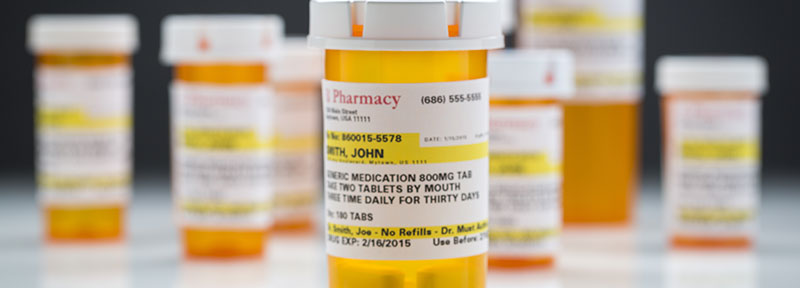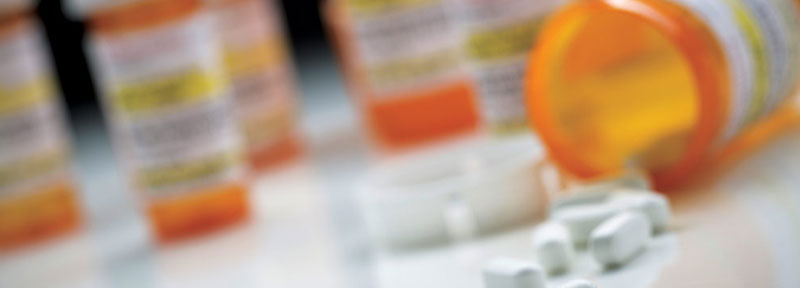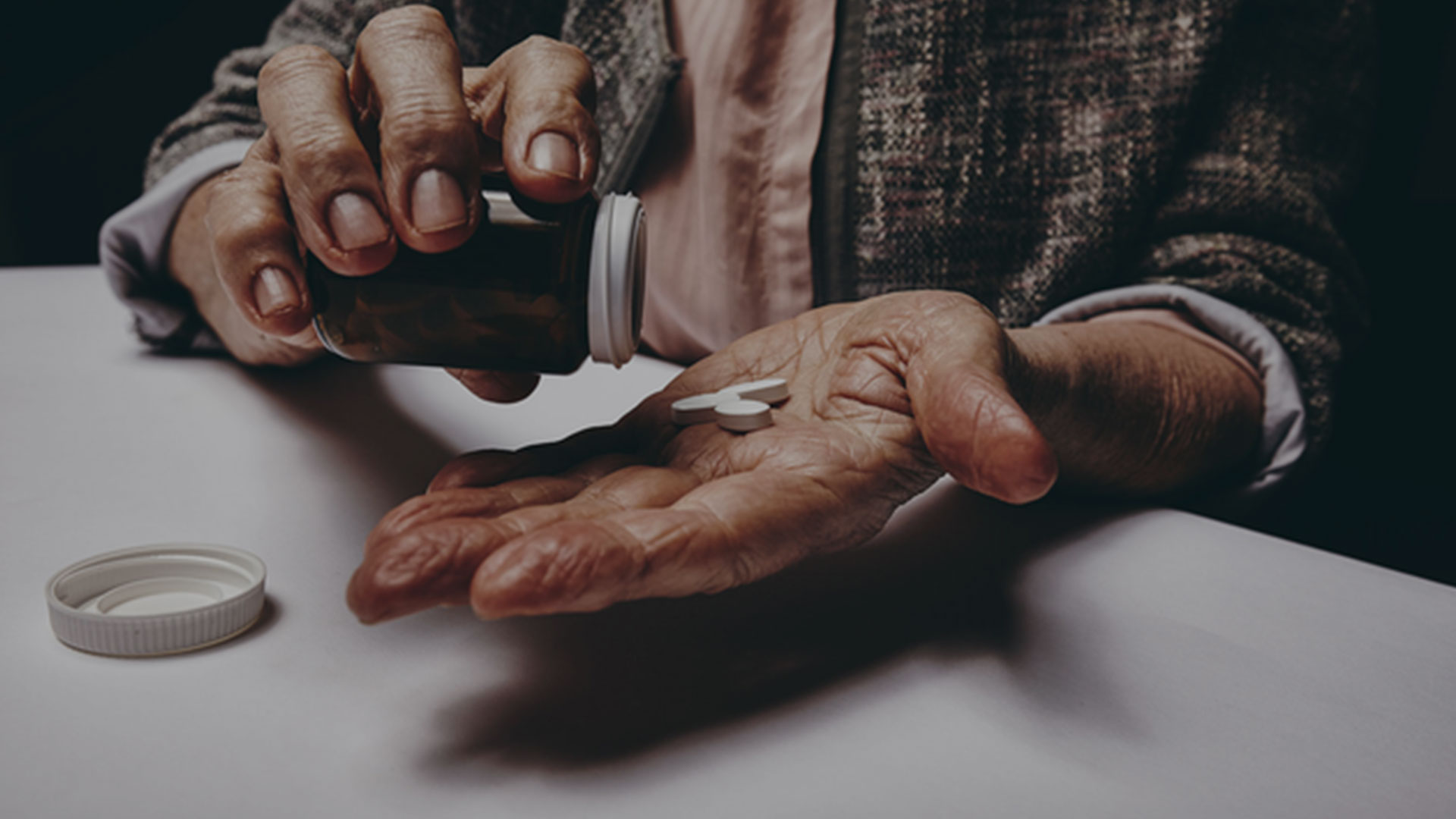03 May Most Addictive Prescription Drugs in America
Table of Content
There are many prescription medications that doctors prescribe to improve the health and lives of their patients. However, even drugs that come from doctors and pharmacies can be abused. As doctors around the country write more prescriptions, the number of people who abuse all types of prescription drugs also increases.
Prescription drugs are some of the most abused substances in the country. The National Institute on Drug Abuse (NIDA) found that about 16 million people in the United States have used a prescription medication without a prescription or have used a prescription drug for a non-medical purpose in the past year. About seven million people have done these things in the past month alone. These results show that prescription drug abuse has become an epidemic in the United States.

There is a reason why prescription drugs are regulated. Using prescription drugs without a prescription or for purposes other than their prescribed use can be dangerous and even deadly. People who abuse prescription drugs have an increased risk of addiction, overdose, accidents, health problems, and premature death.
Despite these risks, some people continue to abuse prescription drugs, because they become addicted to them. Certain prescription drugs are more addictive than others, because they can quickly produce physical dependency and tolerance. By learning what the most addictive prescription drugs are, you can take steps to protect yourself and your loved ones from prescription drug abuse.
Steps to Take When Seeking Help with Addiction
One of the best things you can do to combat prescription drug abuse and addiction is to educate yourself. In fact, education is one of the first steps to take when seeking help for an addiction.
In the case of prescription drugs, it’s important to understand what you’re up against. According to NIDA, the most commonly abused prescription drugs fall into three main categories: depressants, opioids, and stimulants.
- Depressants are often prescribed to treat anxiety, panic disorder, and insomnia. Drugs in this category include barbiturates like Nembutal and Seconal as well as benzodiazepines like Ativan, Valium, and Xanax. Sleep medications like Ambien, Lunesta, and Sonata are also in this class of drugs. People abuse these drugs because they have a calming and relaxing effect. However, these drugs can also cause confusion, drowsiness, and memory problems. Additionally, when a person takes too many depressants, there is a risk that they could stop breathing.
- Opioids are pain-killers that are meant to alleviate severe or chronic pain, but some people become addicted to the euphoric and sedative effect they produce. When a person takes too much of an opioid medication, their heart rate can drop to dangerous levels and their respiration may stop completely, which can lead to death. Drugs in this group include Codeine, Fentanyl, Morphine, Methadone, Oxycodone, and Vicodin. Opioids are among the most commonly prescribed and abused of all prescription drugs.
- Stimulants are used to treat a variety of conditions, including attention deficit disorder (ADD) and narcolepsy. Drugs in this category include amphetamines like Adderall and Dexedrine and methylphenidates like Concerta and Ritalin. These drugs are popular because they increase brain activity, making the user feel more alert and energized. However, excessive use of stimulants can increase a person’s blood pressure and heart rate to dangerous levels, which can result in a heart attack, seizure, or stroke.
While all of these prescription drugs have different purposes and produce different effects, they all have two traits in common. (1) These drugs are all very addictive, because any amount of regular use can result in a physical dependency and tolerance. Physical dependency means that a person needs to continue to use a substance to prevent the onset of withdrawal symptoms, while tolerance means that a person needs to take more of the drug over time to feel the same effects. (2) An addiction to all of these prescription drugs is also very treatable, with help from medical detoxification (detox), counseling, and long-term support.

Prescription drug abuse can lead to addiction and other serious problems. However, some prescription medications are more likely to lead to physical dependency and addiction. It is important to know what the most addictive prescription drugs are, so you can protect yourself and your loved ones from addiction.
1. Xanax (Alprazolam)
Xanax is a depressant in the benzodiazepine class of drugs. This drug is often used by physicians to treat panic and anxiety disorders. In a patient with serious anxiety, Xanax helps to calm them by depressing abnormal activity in their central nervous system.
While Xanax can help patients overcome anxiety disorders, it is also addictive. According to the Drug Abuse Warning Network, Xanax is one of the most abused prescription drugs in the United States. The reason why is simple. The drug is relatively easy to acquire, and it produces a fast-acting sedating and relaxing effect that many people enjoy.
2. Valium (Diazepam)
Like Xanax, Valium is a depressant in the benzodiazepine category. Valium is used to treat many medical conditions, including anxiety, panic attacks, insomnia, vertigo, seizures, oxygen toxicity, and stimulant overdose. Valium is also used as a sedative. The World Health Organization has listed Valium on its list of essential drugs due to its variety of medical uses.
Despite its therapeutic value, Valium is often abused for its sedative effect. Many people who have abused this drug compare the high to being drunk. They report experiencing feeling drunk, relaxed, and talkative. These sensations make Valium very addictive, which can cause people to quickly develop physical dependency and a tolerance to it, encouraging them to take more of the substance. When a person overdoses on Valium, they can experience confusion, drowsiness, and incoordination. Some people may even slip into a coma.

3. Vicodin
Vicodin is an opioid painkiller that is made from a combination of acetaminophen and hydrocodone. Although acetaminophen is an over-the-counter medication, it increases the potency of hydrocodone, making Vicodin a stronger opioid that is designed to relieve moderate to severe pain.
It is very easy to get addicted to Vicodin, because the drug can cause feelings of euphoria when it is abused. It also causes side effects like anxiety, constipation, drowsiness, and slowed respiration and heart rate. People who have become physically dependent on the drug may experience intense withdrawal symptoms if they try to stop taking it. As a result, some patients have trouble stopping Vicodin once they’ve started taking it.
4. OxyContin (Oxycodone)
Oxycodone, often sold as OxyContin, is an opiate drug that comes from the poppy plant. Sometimes, Oxycodone will be combined with over-the-counter pain relievers like acetaminophen or ibuprofen to increase the effectiveness and potency of the drug. In all of its forms, Oxycodone changes the way the central nervous system responds to pain by creating a euphoric and sedative effect. This time-released painkiller is meant for patients who need moderate to severe pain relief after surgery or a major injury.
Oxycodone, in any of its forms, can provide a euphoric high that is similar to heroin when it is injected, snorted, or crushed. Since the drug is very powerful, it can also produce negative effects. For example, even when taken as prescribed, Oxycodone can cause anxiety and nightmares. When someone wants to stop taking the drug, they should slowly taper off of it rather than stopping it all at once.
5. Demerol (Meperidine)
Demerol is a synthetic opioid that is created in a laboratory, instead of being derived from a substance in nature. The drug inhibits the section of the brain that controls pain, and it is prescribed to patients who are experiencing moderate to severe pain after surgery or an injury. In addition to alleviating pain, Demerol can produce euphoria, which can tempt people to abuse it. Some patients may struggle to stop taking Demerol, even if they have used the drug as directed. In addition to euphoria, Demerol can also cause confusion, delirium, and seizures.
While Demerol is designed to be less addictive than other opioids, it is still a commonly abused painkiller. People who abuse the drug can develop a physical dependency and tolerance to it. As a result, they eventually need to increase their dosage in order to feel the same effects. When a person tries to stop taking Demerol, they often experience strong withdrawal symptoms, including anxiety, depression, chills, fever, and suicidal thoughts. However, tapering off of the drug under medical supervision can reduce the severity of withdrawal symptoms.
6. Codeine (Hydrocodone)
Codeine is an opiate drug that is derived from the poppy plant, and it is commonly used for pain and cough relief. Codeine may be combined with other drugs like aspirin or ibuprofen to increase the drug’s effectiveness.
Since codeine is a powerful opiate, it is easy for people to become dependent on it. Individuals who abuse codeine often seek it out in the form of prescription-strength cough syrup, because it produces euphoria and altered states of consciousness. A codeine concoction known as “purple drank” was popularized by hip hop artists and still remains relatively popular in parts of the Southern United States. However, codeine can also cause constipation, depression, itching, and sleepiness. Someone who is trying to stop taking codeine should taper their use slowly to avoid problems.

7. Speed (Amphetamines)
Speed, or amphetamines, are stimulant drugs that have many different medical purposes, including the treatment of ADD and narcolepsy. Some common medications in this group include Adderall and Benzedrine. These drugs are designed to improve a patient’s focus and energy levels.
Since amphetamines increase alertness and energy, they have been misused for decades. People like truck drivers and college students who need to work and maintain their focus without sleep sometimes use Adderall to stay awake. Amphetamines are also popular in Silicon Valley, where workers are required to work long hours to meet strict deadlines. Other people abuse amphetamines, because they can produce euphoric effects that are similar to cocaine. However, since the euphoric rush is followed by a period of exhaustion, people who abuse amphetamines often experience anxiety and depression. When misused, amphetamines can cause fever, insomnia, seizures, sweating, tremors, and spikes in blood pressure and heart rate. In the most extreme cases, amphetamines can also lead to a coma, heart attack, psychotic episode, or stroke.
8. Ritalin (Methylphenidate)
Ritalin is a stimulant from the benzylpiperidine family of drugs, and it impacts the central nervous system by increasing levels of dopamine in the brain, resulting in greater attention and improved impulse control. As a result, Ritalin is often prescribed to treat children, teenagers, and adults who have ADD.
Since Ritalin stimulates the central nervous system in a way that is similar to cocaine, some people abuse the drug by snorting or injecting it to achieve a similar high. Although it produces a high, Ritalin also has several negative side effects, including loss of appetite, stomach problems, and suicidal thoughts. With excessive use, it can also cause dangerous changes in blood pressure as well as psychotic episodes.
Overcoming Addiction to Prescription Drugs
If you or someone you love is struggling with an addiction to one of the most addictive prescription drugs, it’s important to know that help is available and recovery is possible. It is recommended that you begin your recovery journey with medically supervised detox before proceeding to the next steps of psychological counseling and support. Recovery is a process and it takes time. However, your health and long-term sobriety are worth the time and effort.
Georgia Drug Detox provides a holistic and compassionate approach to treating addiction to prescription drugs and other substances. Our team strives to create a supportive environment to help patients detox and recover from alcohol and drug addiction. If you or a loved one is suffering from an addiction to prescription drugs or any other substance, we can help you achieve long-term sobriety. Contact us today to learn more about how Georgia Drug Detox is different from other drug and alcohol treatment centers.
Sources:
“The 7 Most Addictive Prescription Medications.” Drugabuse.com. 14 Mar. 2019. https://drugabuse.com/the-7-most-addictive-prescription-medications/
Carter, Alan. “The Most Addictive Prescription Drugs on the Market.” Health Line. 5 Jan. 2018. 14 Mar. 2019. https://www.healthline.com/health/addiction/addictive-prescription-drugs
Hartney, Elizabeth. “The 10 Most Addictive Painkillers.” Verywell Mind. 7 Nov. 2018. 14 Mar. 2019. https://www.verywellmind.com/ten-most-addictive-pain-killers-22506




 678-771-6411
678-771-6411


No Comments